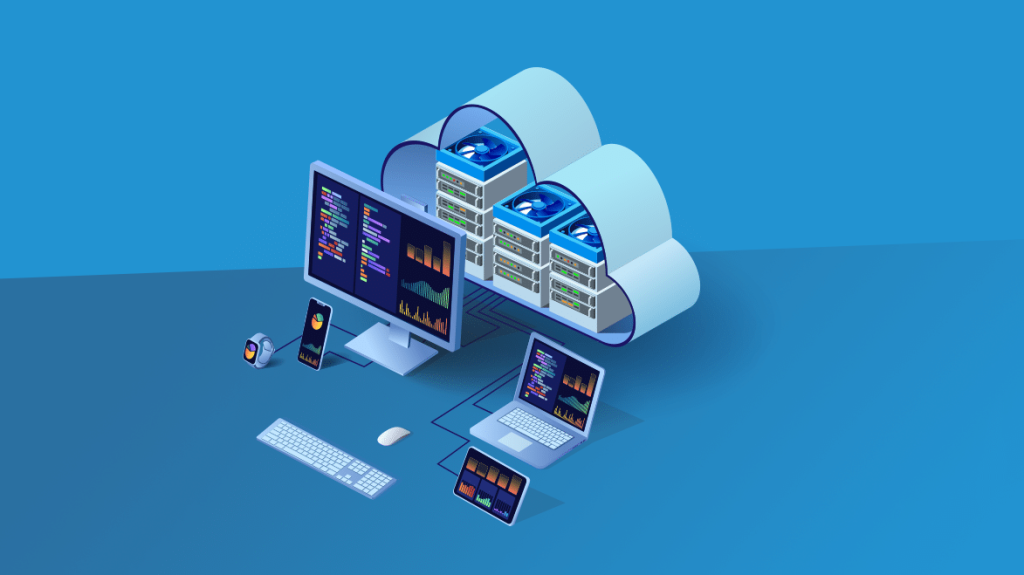
The first part of this blog set the stage for what follows.The coronavirus pandemic slowed us down. At that same it has pushed us into our homes to work. The pandemic has, and continues, to accelerate technological advancements. The novel virus has physically slowed each and everyone of us. And it has slowed the economy. The Brookings Institute reported that our economy has entered a contraction.
There is much we still don’t know about the coronavirus, We also don’t know how the lock downs across the country will affect our business and our economy long term. This is all uncharted territory. While all of this true, technology has been a life-saver for many businesses.
So, how is technology going to keep the USA in business and help the economy to recover?
1. Technology Ensures Businesses Continuity & Keeps Supply Chains Moving.

The supply chain for US companies is long and complex.
Goods manufactured here in the USA have multiple supply vendors. The supply chain cycles in weeks – not days or hours.
We pick up an item at a big-box store or the local hardware store. We don’t consider all the suppliers and technology it takes to get that product on the shelf.
The supply chain has slowed for some industries. Our supply chain technology is still in place and working. It’s ready to fire on all cylinders again when called upon to do so. We must monitor our supply chain.
In a Forbes article, Jaume Ribera of the IESE Business School contributor, warns of the “bullwhip effect.” This is when fluctuating consumer behavior impacts the supply chain at all levels.
2. Technology Enables Employees to Collaborate & Communicate with Clients.
Most businesses have been hard hit by COVID-19. There are others that have been flooded with new clients. They are struggling to keep up with demand.
The VoIP (Voice over Internet Protocol) video/audio communications companies are perfect examples of business sectors that have seen a spike in demand. Companies use applications like Microsoft Teams, to give telecommuters the same experience they had at the office.
Because of video and voice conferencing technology employees of companies across the USA are able to work from home, keep their jobs, and contribute to the ongoing health of their business.

3. Technology Supports Geo-Diverse Workflow.
Before the USA was impacted by the pandemic, many companies were already heavily investing in industry-optimized cloud workspaces, Microsoft 365, hosted servers, and cloud-based data backup/disaster recovery platforms.
Those who invested early in these technologies are now able to see their investment pay off exponentially. Competitors slow to adopt cloud-based technologies are having to scramble to retool their IT environment. Some have had to shut their doors. Companies already in the cloud are in a good position to push through this crisis. They can maintain workflow and business continuity.
When the post-mortem is done on the business impact of the COVID-19 crisis, cloud-based technology may very well be the hero of the day. It may be the driver that kept our economy from slipping into complete disarray.
4. Technology Undergirds the Public Health Message.
There has never been a time in history like this. Government and health officials can disseminate information. Our national telecommunications, internet, and wireless infrastructure may be at capacity. Our backbone of critical technologies is holding. It is playing a key role in the health of the workforce.
Technology giants like Amazon, FaceBook, and Google have stepped up to the plate to squelch the spread of misinformation. They’re replacing it with up-to date factual information.
Blair Levin of the Brookings Institute writes, “all of this internet use is putting more pressure on our broadband infrastructure. Just in the past few weeks, data demands have risen in nearly all categories. The previous peak has become the new average, and the surge is starting to threaten the quality and speed of content downloads. As shelter-in-place directives spread and demand increases, the question lingers of whether our broadband infrastructure can support the new normal.”
Well, the Internet system is working and handling the load. This crisis has reminded the nation it needs to keep up to ever increasing demands.
We need to continue upgrading our broadband infrastructure.
Health authorities are able to deliver critical information. This information is accurate. Distribution is by way of their websites and other trusted sources.
Employees are able to stay safe from the virus. They’re able to continue working remotely. One day this will be over. The returning workforce will be healthier than they would be without access to the disseminated health guidance.

5. Technology Enables Testing and Contact Tracing.
MIT has developed technology that enables your Smartphone to track where you’ve been. At the same time it preserves your privacy. You want to know that everyone around you is safe. At the same time, you don’t want the government tracking where everybody is going. MIT already has an AI-powered device that lets doctors monitor coronavirus patients remotely. The system is called Emerald. It is being used in some assisted living facilities. TheNextWeb reports that, Emerald aims to reduce the risks faced by healthcare professionals treating COVID-19, who are often exposed to the highly infectious disease without adequate protective gear.
Emerald could play a particularly important role in assisted living centers and retirement homes. The residents of these facilities are particularly vulnerable to the disease.
Experts are in agreement that major part of getting everyone back to work, and helping companies get back on their feet, is a healthy workforce. Providing healthcare professionals with the necessary technology to test, report, and contact trace are crucial to this effort.
On April 10th, The Economist reported that Apple and Google announced plans to work together to develop a way to track the spread of the COVID-19 virus. The unification of these two tech giants will make it easier for others to build contact-tracing apps that work without modifying either platform. Of course it raises a question. “If tracing apps are widely adopted, they must make people want to use them,” says Ciro Cattuto, an epidemiologist at the University of Turin, in Italy. “People need to feel like they’re contributing to a common good.”
6. Our New Appreciation for the Use of Digital Transformation Technologies.
Marketers for innovative technologies have traditionally had a challenging time convincing some leaders to invest in the future.convincing some business leaders that now was the time to make investments in newer, more efficient, cloud-based technologies.
Investing in technology that drove digital workflow transformation was seen as “nice to have” if “we can afford it.”
But when COVID-19 shifted the ground under the feet of U.S. business, those who had put money into cutting-edge business process technology were better positioned to ride out the storm. Some leaders, like the COO of the Clipper Corporation, Nancy Hejran, know that, one day, a disaster is going to happen. When that day comes, they want their data to be safe and secure.
These technologies will help the USA maintain a competitive edge in the global marketplace when COVID-19 has become a memory.

7. Technology Supports the Retooling of Companies for the Post-COVID-19 Economy.
There are yet many uncertainties, there is one thing with which everyone seems to be in agreement. Things aren’t going to snap back to “business as usual” once this wave of Coronavirus has passed.
Company leaders are looking at what their business will be post-COVID-19. For some, the course alteration will be minimal – hardly noticed. For other businesses, the idea of “business as usual” will need a new definition. It is sure to be shaped by the demands of our ramshackle economy and available technologies.
How will the coronavirus change the way we do business? How will it change the global business climate? After all, we are in this together.
We will explore the answers to this question in next week’s blog,











